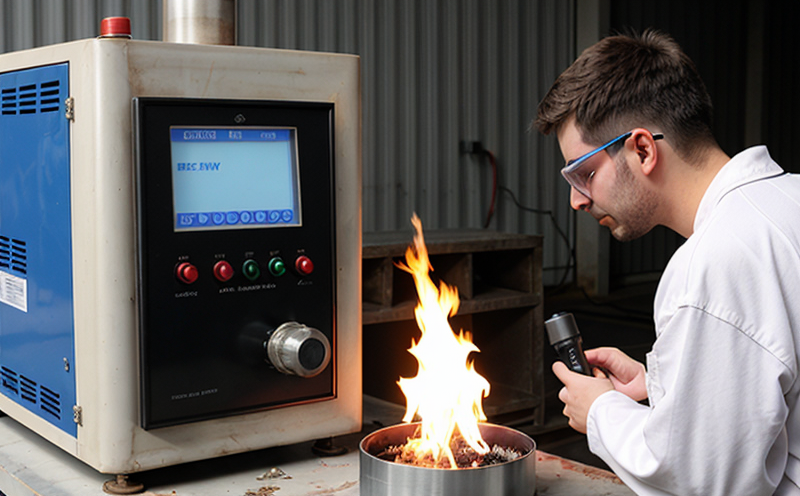ASTM C1363 Thermal Conductance of Insulated Panels
The ASTM C1363 standard provides a comprehensive method to determine the thermal conductance of insulated panels used in various construction and building applications. This is critical for ensuring that materials meet the necessary performance criteria, especially in sectors like HVAC (Heating, Ventilation, and Air Conditioning) where insulation plays a key role in energy efficiency.
The test involves measuring the heat flow through an insulated panel over time under controlled conditions. The apparatus used includes a calorimeter, which is designed to maintain thermal equilibrium between two faces of the specimen, while one side is exposed to a constant temperature and the other to ambient conditions. This setup allows for precise measurement of the heat flux across the insulation.
The test procedure typically involves placing the insulated panel in a specially constructed chamber where the temperature difference between the two sides can be accurately controlled. The calorimeter then measures the heat flow through the specimen, which is used to calculate the thermal conductance (k-value). This value indicates how easily heat can pass through the material.
For quality managers and compliance officers, understanding this test is essential for ensuring that products meet industry standards and contribute effectively to energy-efficient construction. R&D engineers also benefit from this data as it helps in optimizing insulation performance and reducing heating and cooling costs.
The ASTM C1363 standard ensures consistent results across different laboratories by providing detailed instructions on specimen preparation, testing conditions, and data analysis. This consistency is vital for comparing results between suppliers or over time to ensure reliability of the product.
- Customer Impact: By ensuring that insulation materials meet specified thermal conductance levels, this test directly impacts energy efficiency in buildings, reducing both operational costs and environmental impact.
- Satisfaction: Compliance with standards like ASTM C1363 enhances customer satisfaction by delivering high-quality, reliable products. This is especially important for HVAC manufacturers who need to meet strict performance requirements.
In summary, the ASTM C1363 test is a cornerstone of quality assurance in HVAC equipment testing, providing crucial data that contributes significantly to energy efficiency and sustainability goals.
Industry Applications
The ASTM C1363 thermal conductance test finds extensive application across various sectors. In the construction industry, it is used to evaluate insulation materials for walls, roofs, and floors in residential and commercial buildings. This ensures that the materials meet stringent energy efficiency standards set by regulatory bodies.
For HVAC manufacturers, this test is critical as they rely on accurate thermal conductance data to design efficient systems. The test results help in selecting appropriate insulation types that can enhance system performance without increasing costs significantly.
In the broader context of sustainable building practices, ASTM C1363 plays a pivotal role. By providing reliable thermal conductance measurements, it supports efforts towards reducing carbon footprints and promoting green construction initiatives. This is particularly important in regions where energy conservation is a priority.
The test also has implications for procurement departments within organizations. By specifying ASTM C1363 as part of their quality assurance protocols, they can ensure that only high-quality materials are used, thereby enhancing overall product performance and longevity.
Why Choose This Test
Selecting the ASTM C1363 test for thermal conductance evaluation offers several advantages. Firstly, it provides a standardized method that ensures consistent results across different laboratories. This consistency is crucial for comparing data between suppliers or over time, ensuring reliability and repeatability of measurements.
Secondly, this test supports compliance with international standards such as ASTM C1363 itself, which are widely recognized in the HVAC sector. By adhering to these standards, manufacturers can ensure their products meet regulatory requirements, enhancing market credibility and customer trust.
The third advantage lies in its application across a wide range of industries and applications. Whether it's for new construction projects or existing buildings undergoing retrofits, ASTM C1363 offers relevant data that can be used to optimize insulation performance. This is particularly beneficial for HVAC manufacturers who need precise thermal conductance information to enhance system efficiency.
Lastly, the test contributes significantly to sustainability goals by promoting energy-efficient practices. By ensuring that insulation materials meet specified thermal conductance levels, it directly impacts energy consumption and carbon emissions, aligning with broader environmental initiatives.





